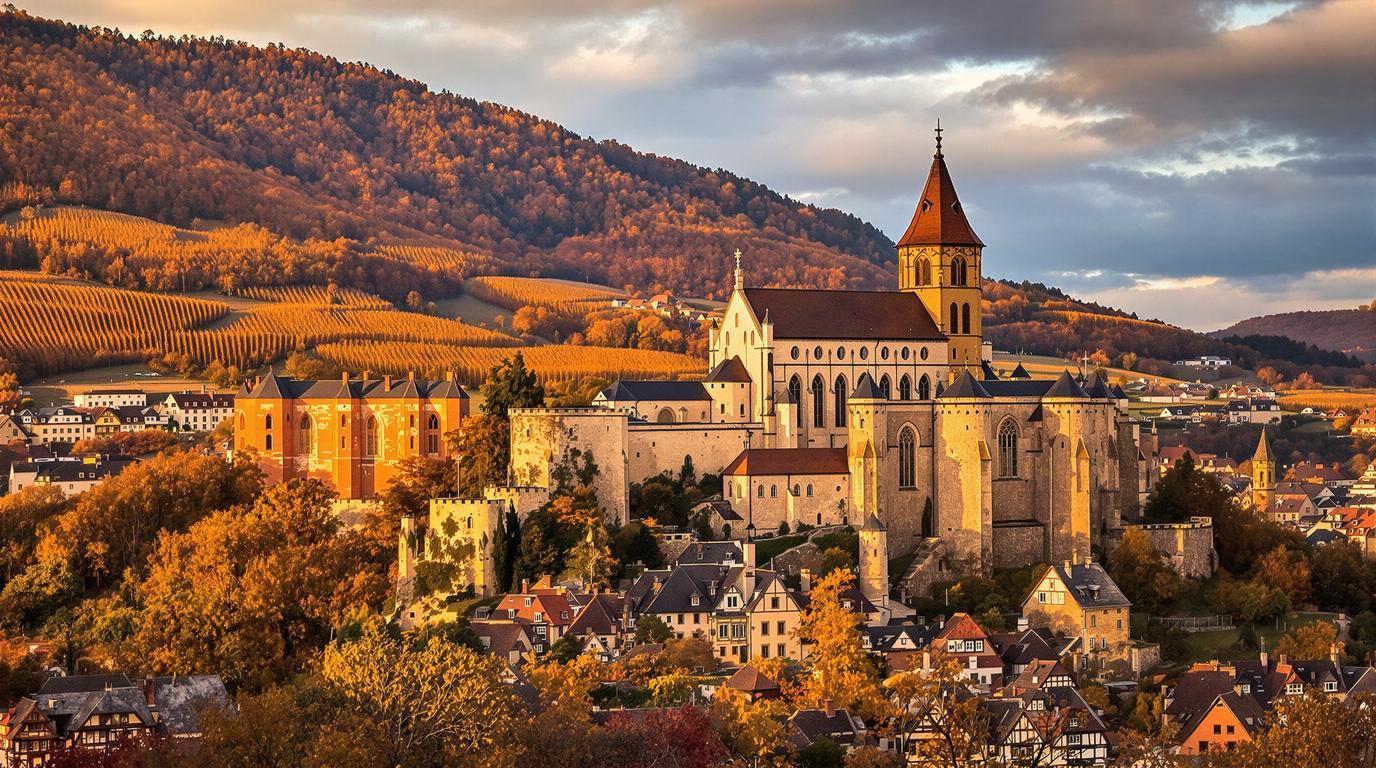Perched in the heart of France’s Alsace wine region, Hunawihr feels like a village that time forgot. With just 500 residents, this storybook settlement captivates visitors with its 15th-century fortified church rising dramatically above vineyards that have produced world-class wines since Roman times. Unlike its more famous neighbors, Hunawihr offers an authenticity that’s increasingly rare in well-traveled Europe.
The extraordinary fortified church that changed religious history
Hunawihr’s crown jewel is the Saint-Jacques-le-Majeur church, a fortified Gothic marvel that tells a remarkable story. During the tumultuous period of the Reformation, this single church became one of Europe’s few “simultaneous churches” – shared by both Catholic and Protestant congregations who alternated worship times rather than building separate structures.
“Our church represents what’s possible when people choose cooperation over conflict. For centuries, two faiths have shared one sacred space – a lesson the world still needs today,” explains Marie Dubois, local historian.
The church’s stone ramparts and commanding position were designed for defense, but today they provide visitors with breathtaking panoramic views across rolling vineyards that change color with each season.
The stork sanctuary that saved a species
Hunawihr harbors another treasure unknown to most travelers: NaturoparC, a conservation center that played a crucial role in saving the white stork from regional extinction. These majestic birds – with wingspans reaching 2 meters – had vanished from Alsace by the 1970s.
The center’s breeding program successfully reintroduced storks to the wild, and today visitors can observe dozens of these elegant creatures in a natural setting. NaturoparC also protects European otters, offering a rare chance to see these elusive mammals up close.
Vineyard trails that reveal Alsace’s hidden heritage
To truly experience Hunawihr’s magic, follow the winding paths through its Grand Cru Rosacker vineyards. These ancient routes connect the village to neighboring Riquewihr and Ribeauvillé, medieval towns that appear frozen in time.
The vineyards produce exceptional Riesling and Gewürztraminer wines, best sampled at Cave Vinicole de Hunawihr, where tastings reveal centuries of winemaking expertise. September visitors witness the grape harvest, a tradition stretching back over 2,000 years.
The butterfly garden that defies winter
Even in chilly seasons, Hunawihr offers unexpected delights. The Jardin des Papillons houses hundreds of exotic butterflies in a tropical greenhouse where temperatures remain spring-like year-round. Walking amid these fluttering rainbows feels worlds away from the medieval stone village outside.
This botanical wonder creates a fascinating contrast to Alsace’s more rugged alpine attractions, offering visitors a sensory retreat whatever the weather.
The fountain of Saint Hune
At Hunawihr’s center stands the ancient fountain of Saint Hune, named for a 7th-century noblewoman whose kindness toward animals became legendary. Local lore claims the saint miraculously diverted a spring to nourish the village during drought.
“Every village has its stories, but ours are written in stone and water,” says vintner Jean-Paul Schwach. “The fountain reminds us that even in our digital world, we depend on ancient sources.”
This spiritual connection extends beyond Hunawihr to places like Slovenia’s medieval villages and Greece’s island chapels – all preserving threads of Europe’s religious heritage.
When to experience Hunawihr at its finest
September brings golden light that transforms vineyards into a patchwork of amber and crimson. May offers wildflowers carpeting hillsides and storks building massive nests atop village chimneys. Unlike tropical destinations requiring specific weather considerations, Hunawihr rewards visitors year-round, each season revealing different facets of its character.
This village isn’t merely picturesque – it’s a living museum where ancient traditions continue unbroken. In Hunawihr, the past isn’t relegated to history books; it’s poured into glasses, celebrated in festivals, and woven into daily life. Here, between vineyard and forest, authenticity thrives in an increasingly homogenized world.
